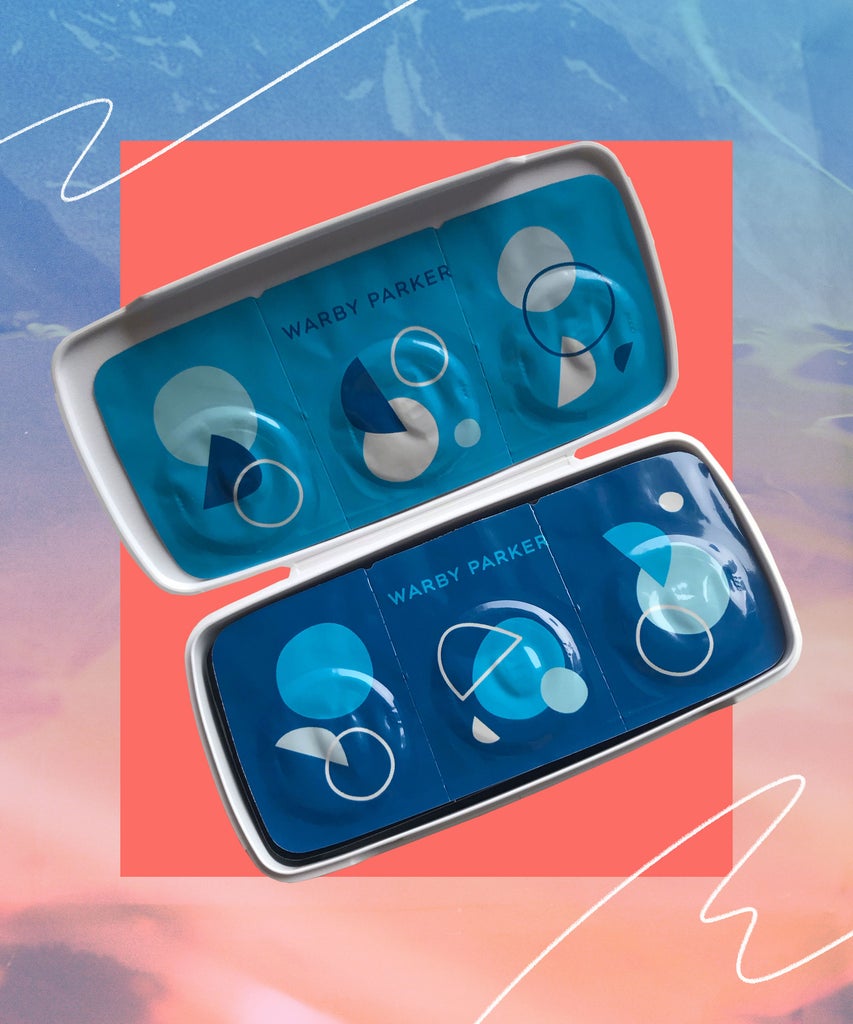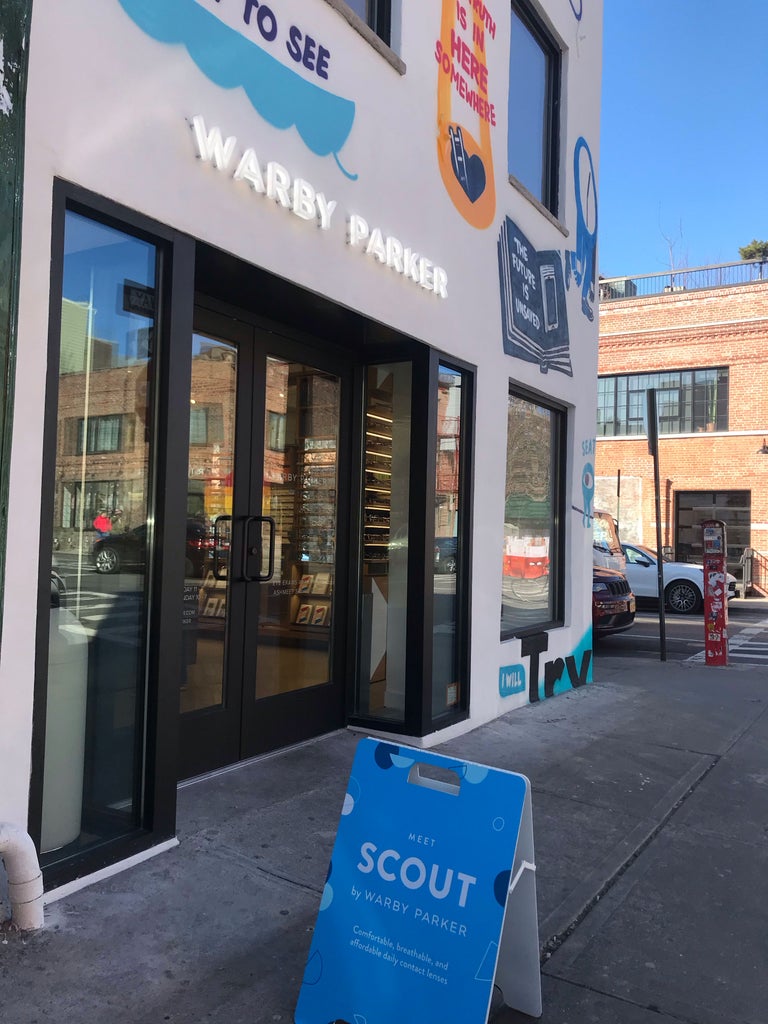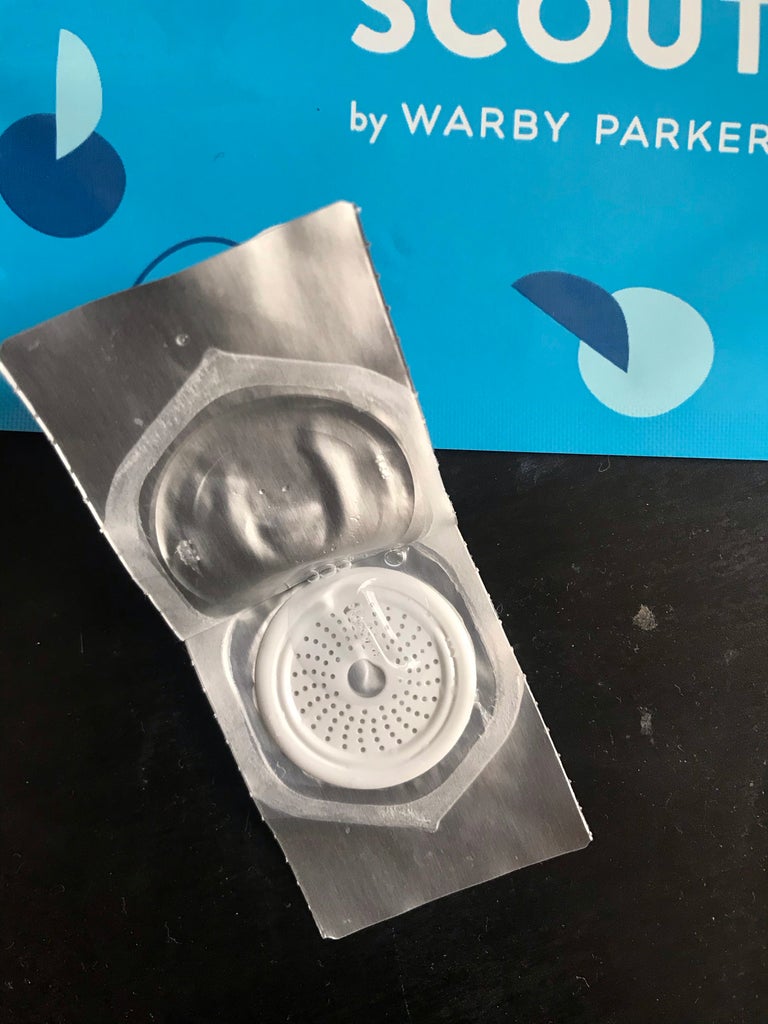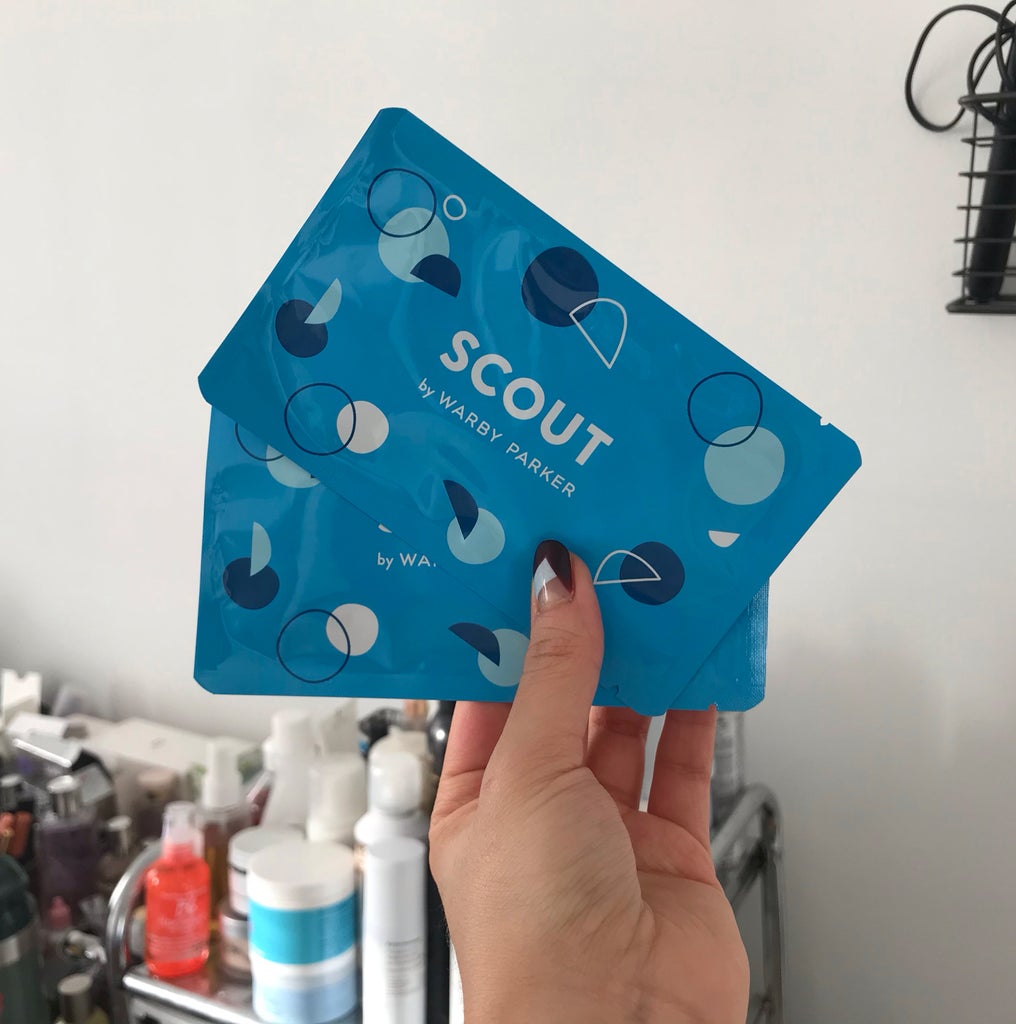
I may be going out on a limb here, but I’m just going to say it: I’m pretty sure no one is like, fully obsessed with their contact lens brand. If you’re like me, you may rely on contacts to see when you don’t want to be slowed down by glasses (like say, if you’re skydiving or ziplining), or if you want your fierce smoky eye masterpiece to take center stage. However, you’ve probably felt like, “eh, things could be better,” at some point.
As someone with chronically dry eyes (fun!), I’ve dealt with having shitty eyesight by wearing my glasses (these chic wire frames, to be exact) three-to-four days a week, and using daily contacts whenever I’m not rocking my glasses. This isn’t based in medical science of any kind, but I’m convinced that if I wore contacts every single day, my eyes would’ve shriveled up into raisins a long time ago.
Anyway, all that’s to say that I was feeling hopeful when I showed up to Warby Parker’s Williamsburg store to get fitted for a pair of their new Scout daily lenses, which launched in November 2019 and mark the brand’s first foray into contacts. From what I’d read, they seemed as hip as contacts can be, and having worn Warbies (purchased with my own cash a.k.a not gifted to me) for years, I was excited to see if I’d love the contacts as much as I love their glasses.
DashDividers_1_500x100

The Exam
On a Tuesday morning before work, I stopped by Warby’s brightly-lit Brooklyn location for an eye exam and checkup — this was set up for me by the Warby Parker team for the purpose of this review. On arrival, I was pointed in the direction of a backroom space where an optometrist greeted me before beginning the exam. After reading lots of tiny letters (and sweating my “Os” and “Qs”), the doctor presented me with an updated prescription and had me try on a pair of Scout lenses to see if the base curve of the lens felt comfortable to wear. [Writer’s Note: Even though eyeballs are not “one size fits all,” many newer (ahem, cheaper) online brands like Scout, Hubble, and MyDay only make one option for the base curve, meaning that it might not fit as well as say, the OG Acuvues you order through your doctor’s office.] Scout lenses felt pretty great at first blink — definitely thinner and more breathable than the Hubble dailies I’d been using previously — and after the doctor took a close look at my eyes, she confirmed that they looked to be a good fit for me. (According to Warby Parker, the brand is currently exploring ways to offer more base curve options in the future.)
DashDividers_1_500x100
The Lenses

When the doctor presented me with a demo pair at the store, I was shocked to see that the packaging was totally flat — nothing like the plastic bubble packs I’d known and used for years. In addition to being much more eco-friendly (these use a mind-blowing 80% less packaging than a traditional blister pack), the foil exterior blocks out light (which can dry out the lens) better than clear plastic. In another stroke of genius, no matter how you peel open the pack, the hydrogel lens is always sitting on the funky-looking white disc inside — and get this: It’s always facing the same way (the outer side facing you), so that you 1) minimize risk of contaminating the part of the lens that touches your eye, and 2) it’s literally impossible to accidentally put the lens in backward, which is a *major* struggle that every contact lens wearer has experienced. A couple of weeks have passed since my exam, and I can confirm that this theory has yet to be debunked.
I left the store with a six-day trial pack of Scout lenses which cost $5. Each six-lens flat pack took up virtually zero space in my mini Dagne Dover Dakota Backpack. I can already tell that this will be a total game-changer when I’m traveling.
DashDividers_1_500x100
The Feel (And $$)
In an effort to curb dry office air, I keep a mini humidifier positioned near my face to help my skin and eyes stay hydrated throughout the day. I still end up using rewetting drops sometime in the early afternoon once my eyes start to get a little red and dry, but after doing a mid-day status check, I was shocked to see that my eyes looked (and felt) totally fine. By the end of the day, they were a little bloodshot, but again, that tends to happen when your eyes are as Restasis-dry like mine.

A common gripe about dailies is (that in addition to the single-use factor), they can tend to be more expensive than reusable lenses. However, as NYC-based optometrist Saniya Shoaib, OD tells us, it’s truly an investment in your eye health. “Dailies are so much healthier for the eyes,” Dr. Shoaib tells Refinery29. “The lenses are so much thinner than two-week or one-week lenses, so they do allow a significant amount of oxygen to the eyes and are much more breathable.” In addition to being more comfortable, dailies are a win for hygiene: “They also take out the cleaning process altogether,” Dr. Shoaib adds. “Since you’re wearing a brand new lens every day, there are fewer chances of it producing any bacteria, allergens, microbes getting into your eyes.”
So while buying your contacts from an online brand has its limitations as far as fit goes, the great thing about is that you can try ones like Scout or Hubble for free — or almost free. At Warby Parker, you can get a six-day trial pack for $5 either in-store or online; however, the brand essentially “refunds” it back to you in the form of a $5 promo code, which you can use at a later date towards any purchase of contacts, glasses, or accessories. Hubble, on the other hand, employs a slightly different strategy where you can actually get your first box for $1 with any new subscription. If things don’t work out, you can simply cancel your membership with virtually no buyer’s remorse.
Most recently, I had been paying $33 for my monthly Hubble contact lens subscription, which delivered a supply of contacts every four weeks. (Sometimes, I’d skip a month if I still had lenses left over since I don’t wear contacts every day.) Unlike Hubble, Scout lenses are purchased in three, six, or 12-month supplies, which retail for $110, $220, or $440 respectively. (This comes out to a monthly cost of about $37.) According to a Warby Parker spokesperson, the brand is “not currently able to accept any insurance for contact orders but can email a detailed receipt to submit [to your provider] for out of network reimbursement.” According to its website, Hubble has a similar policy, but does accept funds from an FSA/HSA account if you have one.
DashDividers_1_500x100
The Verdict
Not going to lie, the thought of all those little plastic contact lenses piling up in a landfill or floating in the ocean tends to keep me up at night. For those reasons, Scout wins major points for sustainability and innovative, user-friendly design. There’s the con of the limited base curve sizes which was not an issue for me during my one-week trial but certainly not as ideal as more expensive brand offerings. At the end of the day? If the contact lenses worked for my Sahara-like eyes, then that’s as true a test as anything. Unfortunately, yes, they’re an investment — and who knows if one day they’ll offer a month-to-month payment option or accept vision insurance — but if you’re already paying out of pocket, then you can try them with confidence knowing that Scout is doing a lot of things right.
Click HERE to read more.
You can publish this article on your website as long as you provide a link back to this page.

Be the first to comment